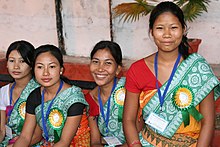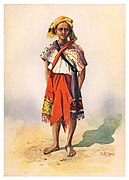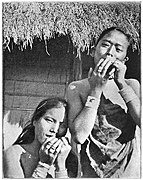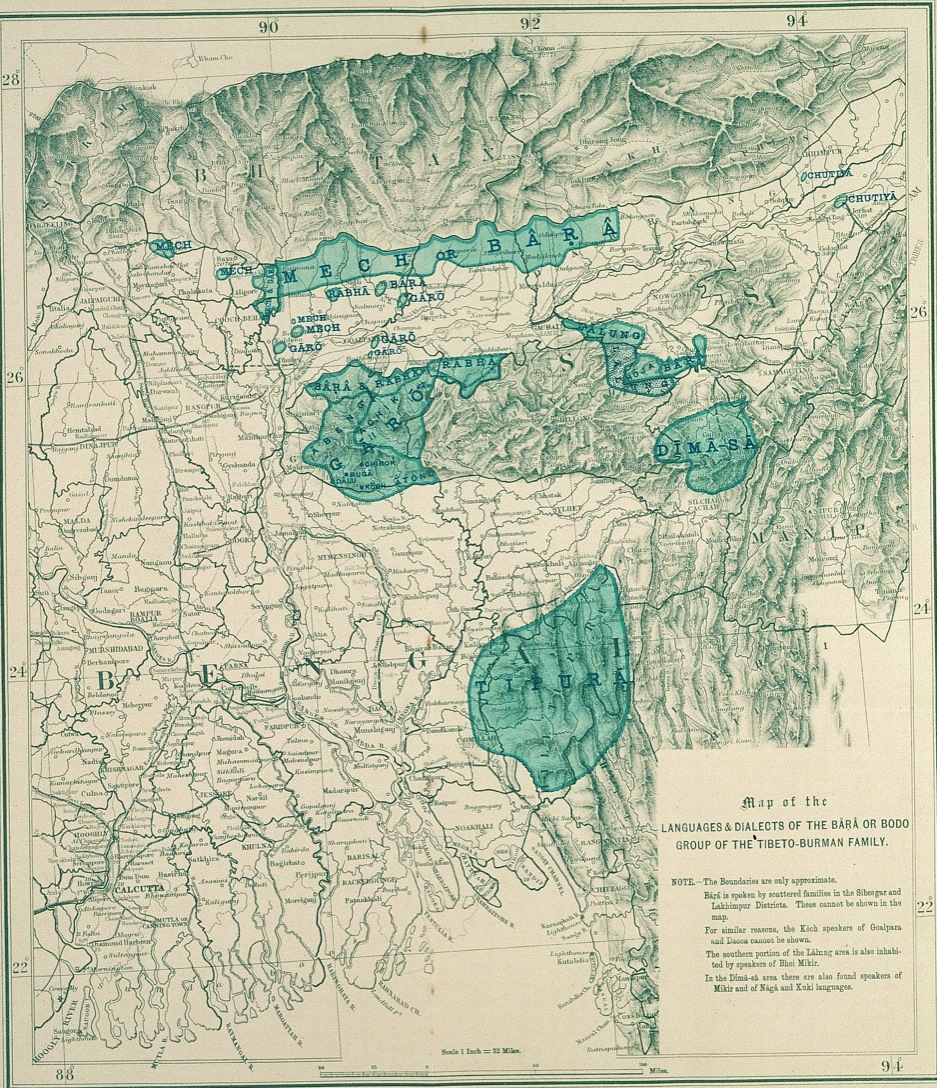Boro (बर’/बड़ो ), also called Bodo, is the largest ethnolinguistic group in the Assam state of India. They are a part of the greater Bodo-Kachari family of ethnolinguistic groups and are spread across northeastern India. They are concentrated mainly in the Bodoland Territorial Region of Assam, though Boros inhabit all other districts of Assam and Meghalaya
Boros are officially identified as “Boro, Borokachari” scheduled tribe under the Constitution of India. Boros speak Boro language, a Boro-Garo language of the Tibeto-Burman family, which is recognised as one of twenty-two Scheduled languages of India. Over two-thirds of the people are bilingual, speaking Assamese as second language. The Boro along with other cognate groups of Bodo-Kachari peoples are prehistoric settlers who are believed to have migrated at least 3000 years ago. Boros are mostly settled farmers, who have traditional irrigation, dong.
The Boro people are recognised as a plains tribe in the Sixth Schedule of the Indian Constitution, and have special powers in the Bodoland Territorial Region, an autonomous division; and also as a minority people.
Etymology
The Boros are sometimes known as Kacharis and Mech to others but self-identify as Bodo or Boro. Boro comes from Bara-fisa, which means “son of Bara”, and Bara stands for “man” or “male member” of the group.
There is a saying of Boro people, Boro hari, geder hari, meaning “Boro people, great people”, which made Dalton conclude that Boro means “great people”. Similarly, in the Kokborok language, Borok means man (‘k’ being a suffix for nouns) and so logically, Boro would mean man even in the Boro language. Brahma noted that Boro might have originated from the Tibetan word Hbrog or Hbrogok, meaning Man. Generally, the word Boro means a man, in the wider sense Boro means a human being (but not specific to a female member of the family) in the languages used by the Bodo-Kachari peoples.
Language
The Boro language is a member of the Sino-Tibetan language family. It belongs to the Boro-Garo group of the Tibeto-Burman languages branch of the Sino-Tibetan family. Boro Language is recognised as one of twenty-two scheduled languages in the Indian Constitution.
Religion
Traditionally, Boros practised Bathouism, which is the worshiping of supreme God, known as Obonglaoree. The shijou tree (in the genus Euphorbia) is taken as the symbol of Bathou and worshiped. It is also claimed as the supreme god. In the Boro language, Ba means five and thou means deep. Since Boros believe in the five mighty elements of God – land, water, air, fire, and ether – the number five has become significant in the Bathou culture, which is similar to the five elements of other Asian religions.
According to Bathouism, before the creation of the universe there was simply a great void, in which the supreme being ‘Aham Guru’, Anan Binan Gosai or Obonglaoree existed formlessly. Aham Guru became tired of living a formless existence and desired to live in flesh and blood. He descended on this great void with all human characteristics and created the universe.
In addition to Bathouism, Boro people have also converted to Hinduism, especially Hoom Jaygya. For this worship through fire ceremony, a clean surface near a home or courtyard is prepared. Usually, worship offerings include a betel nut called a ‘goi’ and a betel leaf called a ‘pathwi’ or ‘bathwi’ and rice, milk, and sugar. Another important Hindu festival, the Kherai Puja, where an altar is placed in a rice field, is the most important festival of the Boros. However, caste and dowry practices are not practised by the majority of Boro Hindus, who follow a set of rules called Brahma Dharma.
Christianity is followed by around 10% of the Boros and is predominantly of the Baptist denomination. The major Boro Churches associations are the Boro Baptist Convention and Boro Baptist Church Association

A group of Boro women at Delhi
Folk tradition and mythology
The history of the Boro people can be explained from folk traditions. According to Padma Bhushan winner Suniti Kumar Chatterjee, mythologically, Boros are “the offspring of son of the Vishnu (Baraha) and Mother-Earth (Basumati)” who were termed “Kiratas” during the Epic period.
History
According to Hodgson, since the people who were known as Kacharis and Mech to others called themselves Boro, and also the Kachari chief deities, Siju, Mairong, and Agrang, are also Mech deities, the term Boro is the proper designation for the tribes. The exonym Mech originated from the Sanskrit word Mleccha. Boros were repeatedly called as Mleccha or Mech. According to Alamgirnamah, Cooch Behar was inhabited by Koch and Mech. Raja belong to the Mech tribe. In ancient Sanskrit literatures, Boros were called as Kiratas and Mlecchas. Copperplate land grant inscription related to Ramsa (Ramsiary) and Mahalia (Mahilary) Boros were found.
Social groups
Aroi or Ari or Ary is a suffix in Boro language, which means folk.
Some of the important clans of Boros are:
- Swargiary: The priestly clan, with Deoris and Ojhas selected from this clan.
- Basumatary: The land-holding clan.
- Narzary: The clan associated with the jute cultivation and supply.
- Mosahary: This clan is associated with the protection of cattle.
- Goyary: This clan is associated with the cultivation of areca nuts.
- Owary: This clan is associated with the supply of bamboos.
- Khakhlary: This clan is associated with the supply of Khangkhala plant required for kherai puja.
- Daimary: This clan is associated with the river.
- Lahari: This clan is associated with the collection of leaves in large quantities for the festival.
- Hajoary: The Boros that lived in the hills and foothills.
- Kherkatari: The Boros associated with thatch and its supply, found mostly in Kamrup district.
- Sibingari: The Boros traditionally associated with raising and supply of sesame.
- Bingiari: The Boros associated with musical instruments.
- Ramchiary: Ramsa is place name in kamrup. It is the name by which Boros were known to their brethren in the hills.
- Mahilary: This clan is associated with collection of tax from Mahallas. Mahela and Mahalia are the varient forms of Mahilary clan.
Gallery
-

Boro women at Hornbill Festival
-

Kherai Group Dance
-

Boro man and woman
-

Boro man
-

Boro woman
-

Boro woman playing harp

Distribution of Bârâ people, as reported in the Language Survey of India 1903
